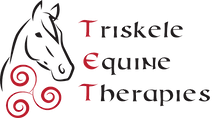The Effects of Pulling Back
- Bonnie Sweeney
- May 1, 2024
- 2 min read

It's inevitable that horses will get tied up at some point during their time in our care. For many it's a daily activity and most of the time it goes off without a hitch (pun not intended). However, most will also pull back at some point and unless they're familiar with the feeling of being restrained they may panic which is when things can get very scary and very dangerous very quickly.
Pulling back puts very precise and extreme pressure on the poll of the horse. This is due to the design of the halter. We may think that a halter surviving a pullback episode is good, but if the halter does not give then there is a very real chance that serious damage can be done to the sensitive structures under the points of pressure.
In a study where they measured the pulling pressure of 300kg on a nylon halter, the readings peaked at 1278 kPa (50x the amount required to do damage to body tissue!) The halter didn't break.
To put this into perspective:
Saddle pressure that resulted in backpain was measured between 187–198 kPa (Pferdeheilkunde Equine Med 2005; 21(3))
Peak pressures measured to cause pain and potential tissue damage were 31 kPa or above (Nyikos S, von Rechenberg B, Werner D, et al.)
These findings are both vastly under the amount of pressure a nylon halter can withstand when being pulled back on.
Horses that have pulled back often experience pain throughout their body depending on: the forces involved, the footing, how they pulled back and if they fell over. In extreme cases they my fracture their occipital bone or a cervical vertebra. Even if only the poll is injured, there are many structures in the poll that influence the horse's back and hind quarters. Which means tension and pain in the poll can have an indirect influence on the horse's over all musculoskeletal health and function.
So what are the signs to look for that your horse as hurt themselves after pulling back?
Head shyness
Reluctance to be bridled / haltered
Agitation during grooming
Avoiding the contact / difficultly sustaining it
Difficulty being caught
Changed behaviour
Soft tissue therapies and gentle manipulation can help alleviate the pain and assist the healing process after pulling back so your horse can function at their best.
In the event that your horse is displaying neurological problem however a vet is advised.
References:
Nyikos, S., Werner, D., Müller, J.A., Buess, C., Keel, R., Kalpen, A., Vontobel, H.D., Von Plocki, K.A., Auer, J.A. and Von Rechenberg, B. (2005) Measurements of saddle pressure in conjunction with back problems in horses. Pferdeheilkunde 21, 187-198.







Comments